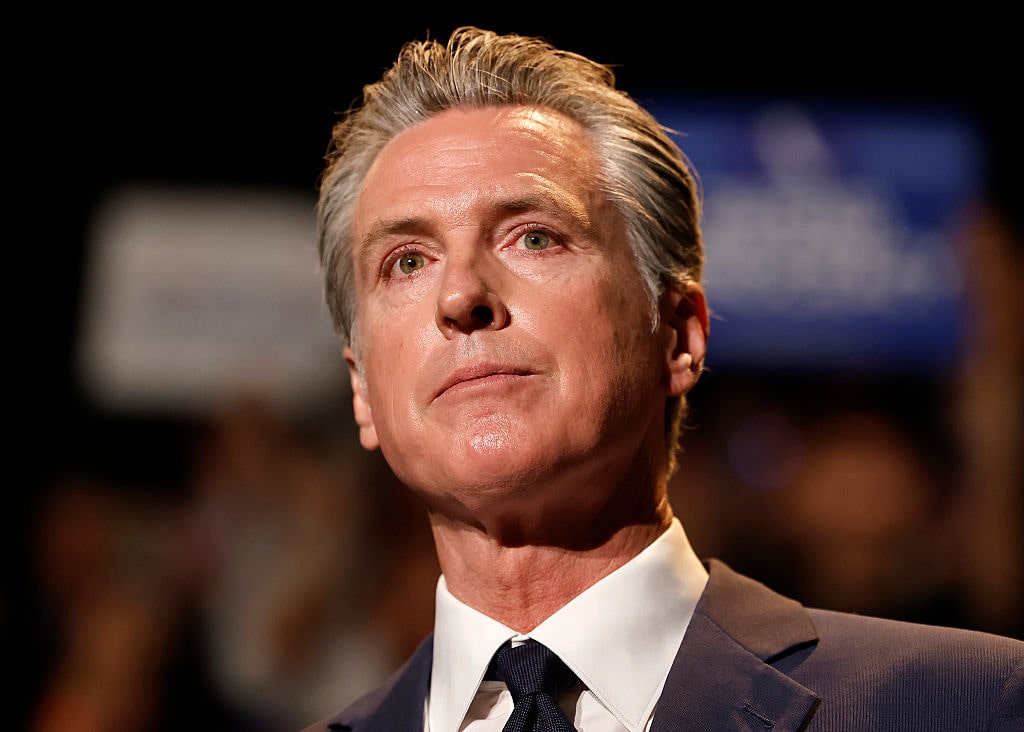
From the process to public opinion, there are so many ways Newsom’s plan could fail.
California Governor Gavin Newsom has revealed his much-ballyhooed “redistricting” plan to the public. As promised, the proposed maps sure seem likely to flip several red districts blue – but can he pull it off? And whether it all comes together or not, can Newsom and the Democratic Party in general weather the storm that is certain to follow?
Gerrymandering by Any Other Name
As Liberty Nation News reported Friday, the Golden State governor justifies his scheme as retaliation, a move to balance a similar but opposite attempt by Lone Star State Republicans. The Texas legislature – sans most Democrats – has been in special session attempting to hammer out a mid-decade redistricting that could hand as many as five seats in the US House to the GOP come the 2026 midterms.
But gerrymandering by any other name would smell as sour.
Newsom says President Donald Trump and the Texas Republicans started this; the GOP says Democrats did. In truth, whether either side is currently as gerrymandered as the other alleges, both parties have partaken in the now time-honored tradition throughout modern history. No matter how justified one might be to balance out the other, redistricting specifically to convert congressional seats to one’s party is the very definition of gerrymandering. And the recently released maps reveal how far Newsom hopes California lawmakers – and the people – will go.
By the existing map, Districts 1, 3, and 5 run almost the entire length of the state, from the center to the Nevada border. And they’re red as a beet. District 2, on the other hand, runs down the coast from Oregon to District 11 (which includes San Francisco) and is solid blue.
The proposed new map, however, brings District 1 down and stretches District 2 from the coast to Nevada. On the ocean side, it dips from the Oregon state line to just north of San Francisco. District 1 extends a bit farther south and west than before, and District 3 gets squished into a tiny little buffer between Districts 1 and 5, the latter of which is being moved farther east to the state line.
The result is almost the entire top half of the state – including the currently red Districts 1 and 3 – turning solid blue. The new map would also shuffle Districts 41 and 48 to include a majority of Democratic voters.
As it stands, there are eight “safe Republican” districts and one that leans red. All nine are currently occupied by GOP lawmakers. Should these maps be adopted and work out as Newsom hopes, the Republican districts drop to just four.
A Prickly Procedural Problem
There are a lot of ways this plan can backfire on the Golden State’s governor, however – and first among them is simply that it might not work. In 2008 and 2010, then-Governor Arnold Schwarzenegger spearheaded Propositions 11 and 20, which stripped the state legislature of the power to redraw district maps and gave it to a newly established independent redistricting commission.
Newsom plans to bring his proposal to the legislature as soon as Monday, and with Democratic supermajorities in both chambers, it’s likely they’ll approve it quickly – though that only goes so far as calling a special election in November and putting it to a popular vote. Ultimately, it isn’t his fellow Democratic Party politicians who he needs to support him, but the people.
And the people aren’t impressed, if a recent poll from Politico is any indication. By an almost two-to-one margin, respondents opted to keep the independent commission in place. Just 36% backed a return to congressional redistricting. Especially damning for Newsom’s plan is the fact that the opposing majority included 61% of the Democrats polled.
The Sharpest Thorns on Newsom’s New Rose
Even if the governor manages to convince voters by November – or even earlier, for those voting by mail-in ballot – he and his fellow Democrats would still face other consequences. Right now, only Texas and California are trying to redistrict. But a few other states – mostly red – are considering joining the fray. If the Golden State suspends its independent redistricting commission and allows the Democrat-controlled legislature to restructure the state, it could well start a tit-for-tat gerrymandering war – one the Democrats aren’t likely to win.
For one thing, as Vice President JD Vance explained, most blue states are already quite gerrymandered. But beyond that, there are simply more states with Republican trifectas than Democratic. It’s a numbers game, and Republicans control more state legislatures and governorships.
Finally, there’s the problem of public opinion. If Newsom nukes the independent citizen committee currently in charge of redistricting, he’ll have a much harder time pushing his own moral superiority over Texas’ Greg Abbott. Furthermore, as other states jump in – red and blue alike – it becomes increasingly difficult to really remember (or care) who started the fight.
Newsom’s time is almost up in the halls of Golden State power, thanks to the term limits – but he seems keen on a loftier prize. He may see this gerrymandering war with Texas and Trump as a moral high ground from which it’s an easy step to the White House. But it’s just as likely to become the hill his political career dies on.
Liberty Nation does not endorse candidates, campaigns, or legislation, and this presentation is no endorsement.
















